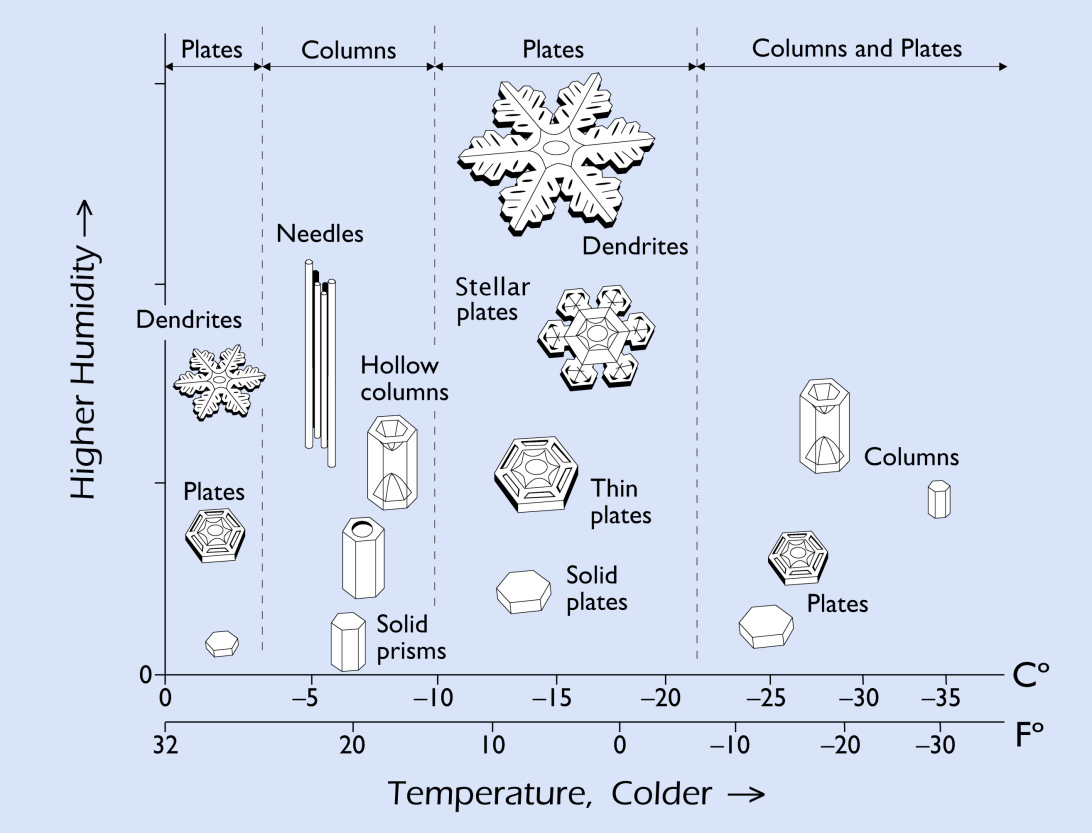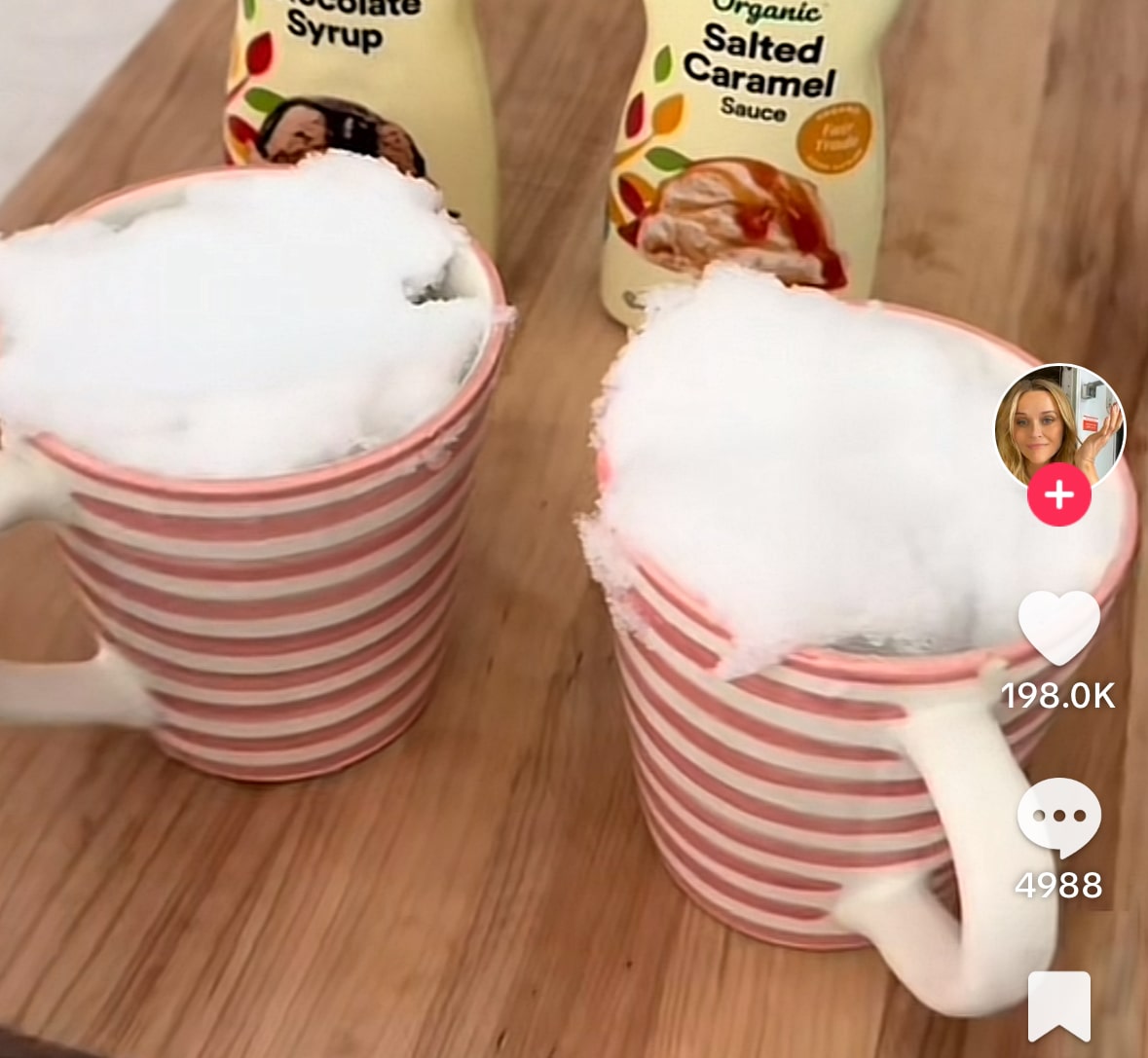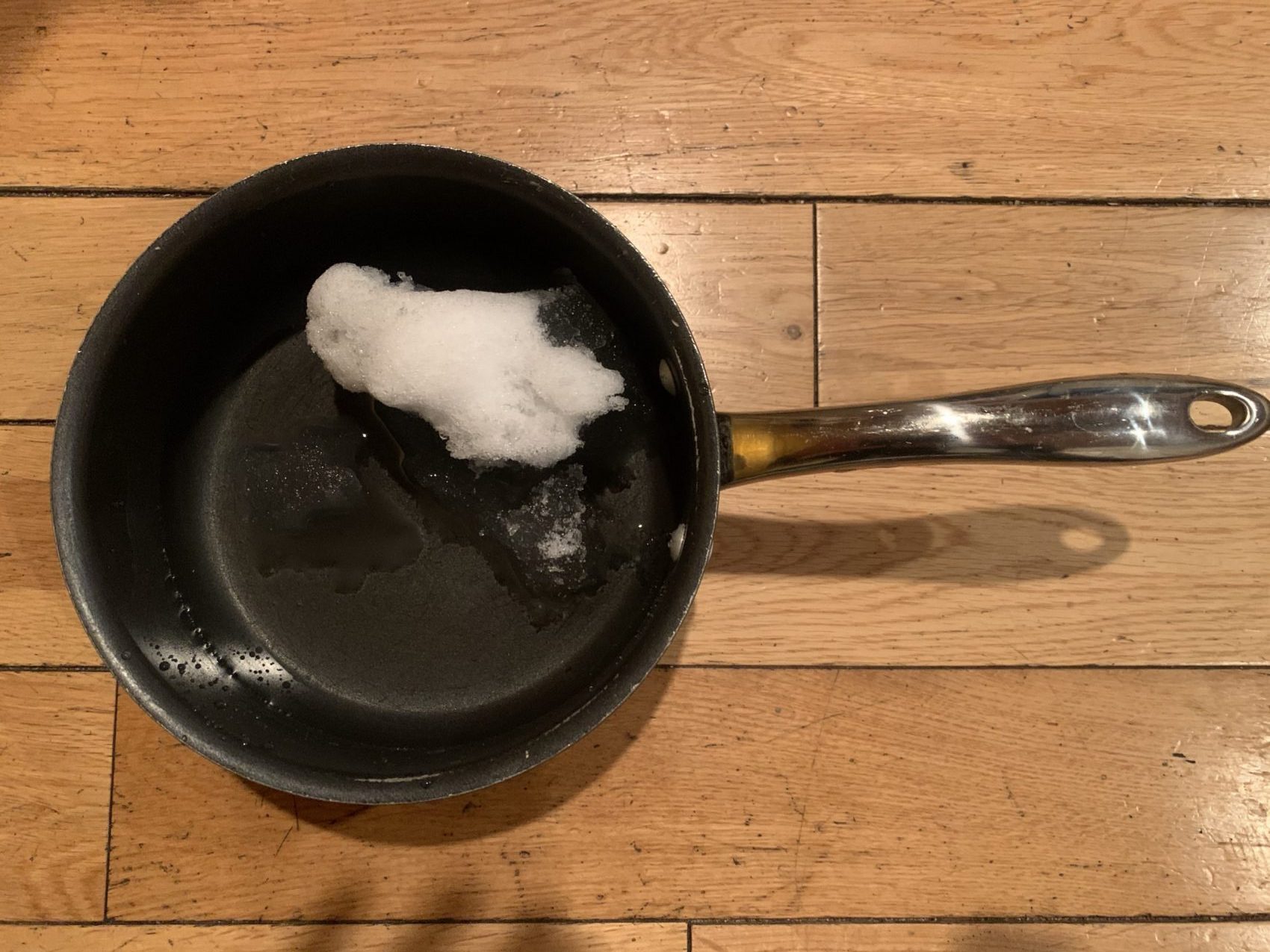
A heated debate has broken out on the internet after actor Reese Witherspoon posted a TikTok for her Snow Day Chococcinos. The celebrity made a delicious coffee-flavored treat from snow she scooped from her barbecue which she drenched in coffee and caramel syrup. Critics were quick to condemn the post, stating that snow was dirty or even unsafe to eat.
As Frank Zappa said, “Watch out where the huskies go, and don’t you eat that yellow snow.” However, is it safe to eat the white fluffy stuff? Of course, no one would consider tasting the grey dredgings in the street, but what about the freshly fallen white snow in your garden? The short answer is yes, it is safe. Is it recommended? No, it is not.

Let’s nerd out for a second here: What is snow? For snow to form, three requirements must be met: below-freezing temperatures, sufficient humidity, and a crystallization nucleus. The crystallization nuclei can be frozen water, but it can also be a speck of dust, pollen, bacteria, or any chemical particle in the air. If the air contains sufficient water vapor, the steam condenses on one of these seeds, and water droplets freeze into ice crystals and chain with other ice crystals to form an ice crystal lattice. Until the snowflake falls out of the cloud, it consists of about 10 million ice crystals, usually forming into a hexagonal prism. The temperature and humidity are responsible for the shape of the snowflakes. So, long answer short: a snowflake theoretically consists of 100% water, aside from the microscopic crystallization nucleus.

However, on its way through the atmosphere down into your garden, it can absorb small particles so that when we want to eat it, it is enriched with some unwanted “additives.” Ice crystals provide a larger surface area to absorb chemicals and pollutants, and colder temperatures also enhance the condensation of gaseous water and organic substances onto particles. This is one of the concerns of critics and health organizations and why it is recommended by the National Snow and Ice Data Center to wait a bit and not consume the first bit of fallen snow, but rather the later snow in a snowfall, as then more of the particles in the atmosphere have been absorbed, and the subsequent snow is “cleaner.” So, in short, there will be bacteria and particles in snow, but the amounts are typically low.
However, you need to remember that snow is made from water vapor, solidifying directly into a crystal-lattice structure and not from liquid water, meaning that snowflakes lack the electrolytes and minerals found in drinking water. This makes the effect of eating snow similar to drinking distilled water, causing an imbalance of mineral salts, causing nausea, headaches, heart palpitations, and even death. It is important to put this into perspective, though — we are talking about using snow as your only source of water over several weeks and not having the odd cup of snow as a fun treat.

Polar expeditions will melt snow for drinking and cooking. You don’t even have to boil snow in its pure form to make it safe for human consumption. However, snow has a much lower density than frozen water or water in liquid form. You would have to melt about ten liters of snow in your mouth to drink a liter of water. In addition, melting snow in your mouth will lower your body temperature over time, costing your body valuable energy. This can become a problem in an emergency, where mountaineers have died of thirst in the snow as they could not melt enough in their mouths to survive.
So if your question is, is it safe, the answer is yes, provided you don’t consume snow near roads or groomed snow or old snow lower to the ground that could be contaminated with animal feces or pollutants, and provided you don’t consume it as your only source of drinking water. Should you? That depends entirely on you: did you drink from the hose growing up, or are you the kind that only drinks bottled water?
@reesewitherspoonSnow days were made for Chococinnos ❄️☕️♬ Let’s go – Official Sound Studio